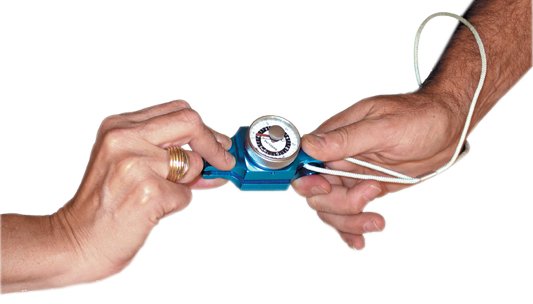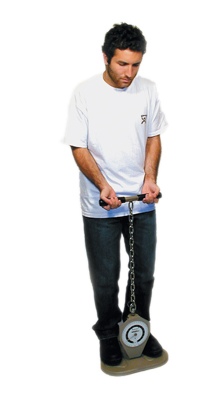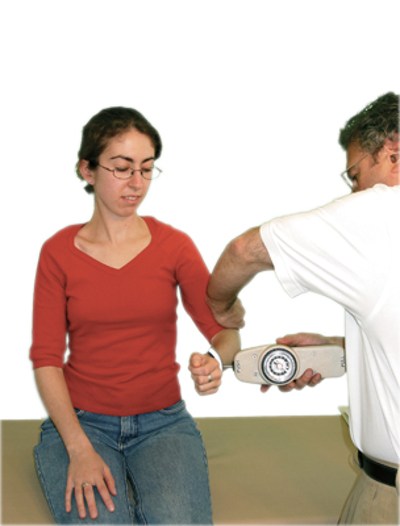 5th Jan 2017
5th Jan 2017
Picking the Right Strength Evaluation Tool for Rehabilitation

We’ve written about the importance of strength and manual muscle testing in rehabilitation before. It bears repeating that muscle testing provides valuable information in the rehabilitation process including:
- Establishment of baseline strength
- Identification of deficits or disability
- Tracking of recovery progress
- Identification of any adjustments needed for rehab program
From sports therapists to occupational therapists, strength testing plays a role in treating most patients. Some of the most common issues that would require strength testing as part of their rehabilitation are:
- Workplace injuries including neck strain
- Sports injuries including Post ACL reconstruction
- Post-stroke recovery
- Low Back Pain
- Repetitive injuries including carpal tunnel syndrome
Each of these issues require a different type of strength testing in order to adequately evaluate and create an effective rehabilitation program designed for the individual. The question then becomes choosing the right dynamometer or strength testing tool for each individual patient, their diagnosis and unique set of symptoms.
How to Choose the Right Muscle Testing Tool

Grip Strength: One of the first things evaluated with a post-stroke patient is their grip strength. It is now becoming a standard protocol as scientific evidence points towards the fact that grip strength is not only an indicator of function but is a good gauge of overall health. Grip strength is so important, that a systemic review of studies, published in the Journal of Geriatric Physical Therapy, evaluating the importance of grip strength on health outcomes found: “the value of grip strength as a predictor of mortality, disability, complications, and increase length of [hospital] stay.”.
A hand held device called a dynamometer is the appropriate tool to use to measure grip strength or force. Baseline’s hydraulic hand dynamometer is a great choice when measuring a patient’s grip strength. One of the biggest benefits of Baseline’s dynamometer is it was designed with a 5 position handle with grips ranging from a very close grip to a very wide grip. Having the varying grip positions available increases the likelihood of achieving accurate results. While everyone and their strength is variable, maximal grip strength most commonly occurs in the second or third position and is usually tested at the second position.
Related Article - Baseline Evaluation Products: Tactile, Sensory, and Strength Measurement Tools
Pinch Strength: Pinch strength is often overlooked by patients until they start to lose it. Pinch strength is an important part of daily activities from picking a penny up off the floor to threading a needle. Not only is establishing pinch strength a valuable tool in rehabbing hand injuries it’s also an important evaluation tool for certain job assessments.  Pinch strength is such an important part of daily activities for all people and research has pointed towards a correlation between pinch strength with components of hand writing and functional activities for children with autism (Source). In the example of working on handwriting skills with a child with autism, accurate measurements of pinch strength are needed as a baseline, but are used throughout occupational therapy to track progress with pencil control and handwriting legibility.
Pinch strength is such an important part of daily activities for all people and research has pointed towards a correlation between pinch strength with components of hand writing and functional activities for children with autism (Source). In the example of working on handwriting skills with a child with autism, accurate measurements of pinch strength are needed as a baseline, but are used throughout occupational therapy to track progress with pencil control and handwriting legibility.
One of the most important factors in choosing a pinch gauge is repeatable accuracy or being able to replicate reliable results. Industry leader, Baseline has created a pinch gauge which measures tip, key and palmer pinch and is CE

certified to have repeatable accuracy.
Large Muscle Testing: There are situations where measuring larger muscle groups for muscle strength are necessary.
For example, for a sports therapist who works with a cyclist who complains of low back pain, the therapist must be able to establish the maximum capacity of the back muscles. In fitness and in health, a healthy back is the foundation for endurance, muscular strength and flexibility. Athletes with poor back muscle endurance and/or posture are prone to back injury. For example, reduced back extensor muscle strength and endurance is a risk factor for chronic low back pain in cyclists. Therefore, assessment of back strength using a back-leg-chest dynamometer is an important part of providing a baseline and tracking progress through rehabilitation. Further, using a back-leg-chest dynamometer as a part of sports training would be a great preventive measure in establishing baselines and identifying deficits in order to create training programs designed to optimize strength and avoid potential injury.
In order to get accurate results when testing larger muscle group, it’s important to have a stable evaluation tool to complete the testing. Baseline’s Back-Leg-Chest dynamometer was designed with a stable base which provides secure footing for testing subjects. What’s more, Baseline’s Back-Leg-Chest muscle testing tool is able to be adjusted to accommodate patients of all heights and varying strength abilities.
Push-Pull Testing: Pushing, pulling and lifting are skills used not only in daily life, but in certain job tasks. Workers use various pushing and pulling techniques in a wide range of activities, such as:

- Pushing or pulling manual carts and trucks
- Pushing objects such as cartons on flat surfaces (tables, floors, etc.)
- Operating certain tools and controls
- Pulling open and pushing close doors
- Wrapping and boxing up products with wrapping materials
Participating in these types of activities everyday can leave workers at risk for injuries including:
- Back strain or pain
- Slips and falls
- Neck and shoulder strain
What’s interesting about the energy required for pushing and pulling is that research has found that workers regularly underestimate the amount of force they are using when participating in these activities. This means that workers may exert more force than they safely should and can unknowingly set themselves up for an injury. The use of a push/pull dynamometer is important in evaluating a person’s ability to perform job tasks safely in order to prevent injury. Also, a push-pull dynamometer is useful in rehabilitation in helping identify deficits as a result of an injury and measuring progress towards returning to work. Baseline’s heavy-duty dynamometer features a hydraulic system which is considered the industry standard in order to get the most accurate results. The Baseline push-pull dynamometer also automatically holds the maximum force reading.
As you can see strength testing is important for many reasons. From evaluating for rehabilitation to assessing a job candidate’s ability to perform job tasks safely; it’s essential to have the right strength measuring tool for the most accurate results.
Related Article - Hand Dynamometer Buying Guide | Featuring MicroFET 2, JTECH Commander PowerTrack II & the Lafayette MMT Device





